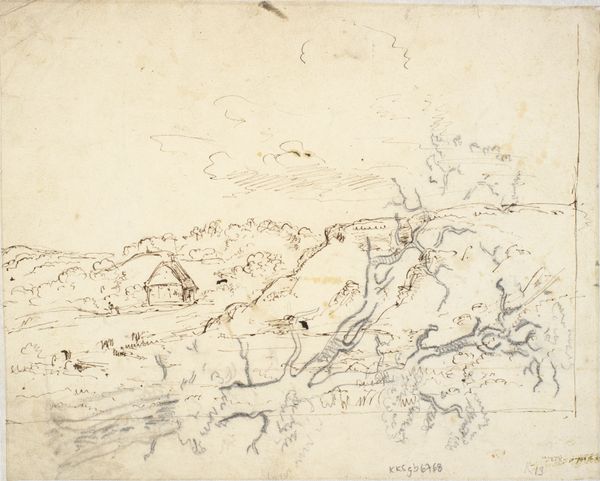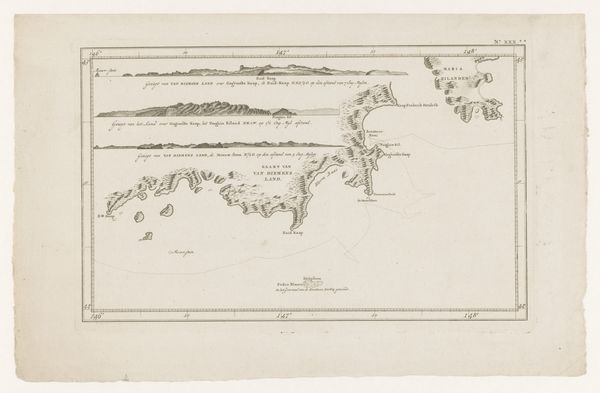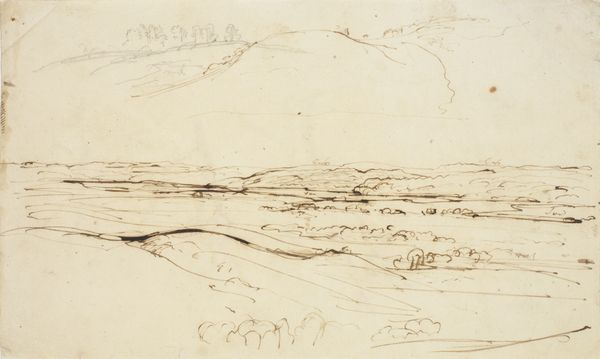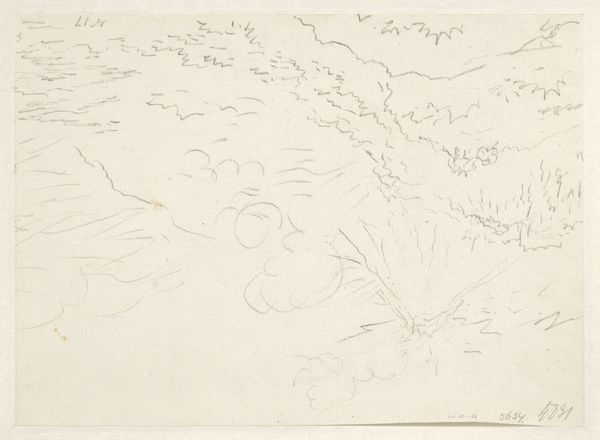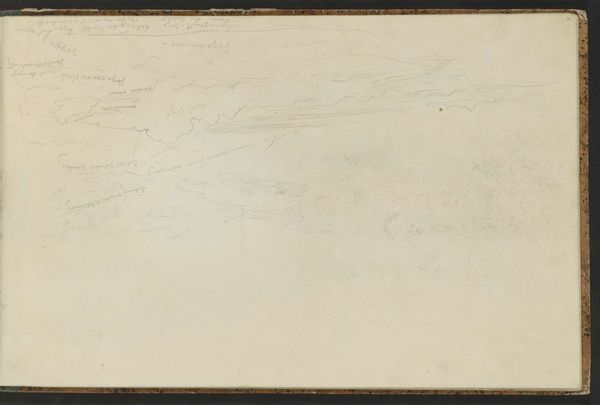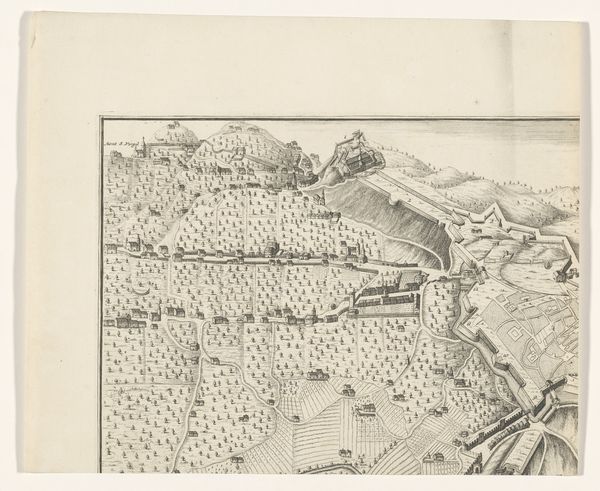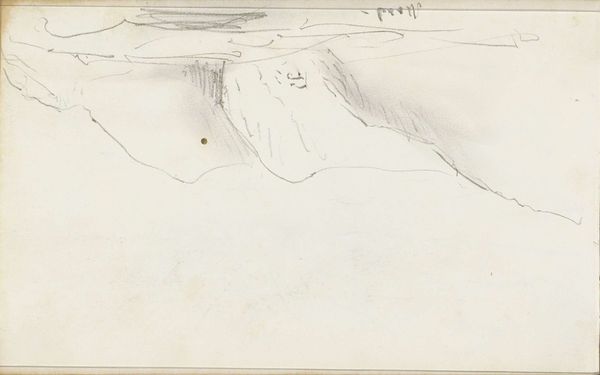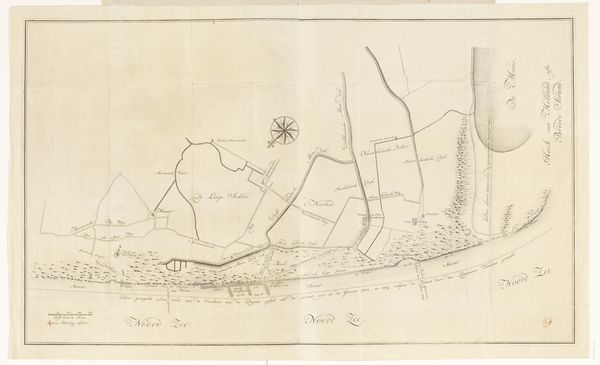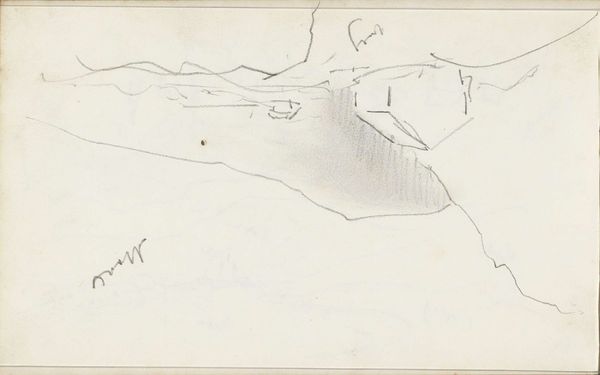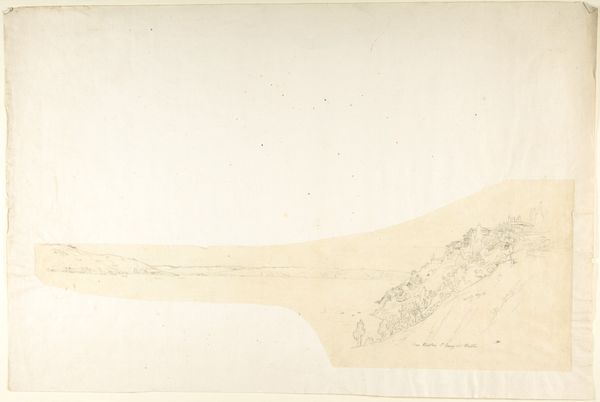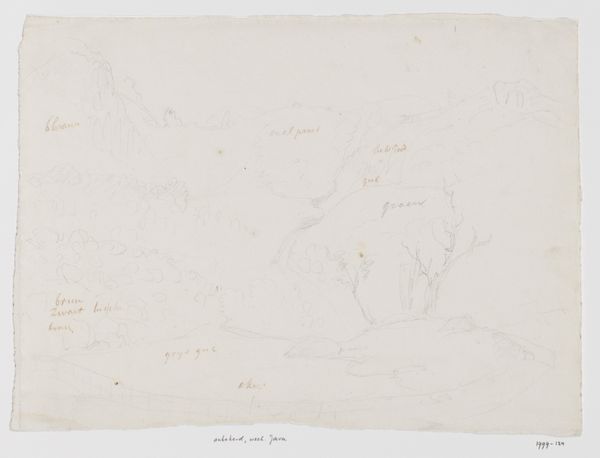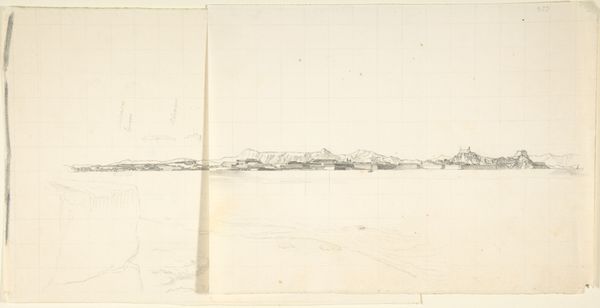
drawing, plein-air, ink
#
drawing
#
plein-air
#
landscape
#
ink
#
academic-art
#
realism
Dimensions: height 214 mm, width 327 mm
Copyright: Rijks Museum: Open Domain
Editor: So, this is Jan Brandes' "Duivelspiek bij Kaapstad," likely from 1786 or 1787. It's an ink and wash drawing, probably done *en plein air.* I'm really struck by the way the artist captured the vastness of the landscape with such minimal detail. What do you see in this piece? Curator: I see more than just a landscape; I see a document of colonialism and the imposition of a European gaze. Brandes, as a European traveling in South Africa, isn't simply recording the geography. He's also implicitly claiming it, visually mapping it for a European audience. What do you make of the seemingly casual rendering of the "devil's peak" and the "Cape"? Editor: That’s an interesting perspective. I hadn't considered the implications of documenting a landscape in that way. Are you saying that the act of drawing itself becomes a form of control? Curator: Precisely. Consider who the intended audience was for these images. Was it the local inhabitants of the Cape? Unlikely. These images served to familiarize and, in a sense, tame the foreign for European viewers. They participated in constructing a visual rhetoric of possession. What feelings are evoked as a consequence? Editor: So, it’s less about the artist's intent and more about the cultural context and the power dynamics at play? The "objective" record has a colonial purpose. Curator: Exactly. The drawing becomes an instrument in a broader colonial project. The seemingly innocent depiction masks a narrative of domination and the erasure of Indigenous perspectives. Even the style – this straightforward, almost academic realism – lends it an air of authority, as if to say, “This is how things *are*.” Do you agree that such framing served as political instruments? Editor: Yes, I see that now. I originally appreciated it for its simplicity and directness. It sounds almost complicit to have recorded the mountain vista. Thank you. This really changes how I view landscape art of this period. Curator: Absolutely. The beauty and aesthetic pleasure we might derive from this image shouldn't blind us to its historical context and the often-unequal power dynamics it represents.
Comments
No comments
Be the first to comment and join the conversation on the ultimate creative platform.

